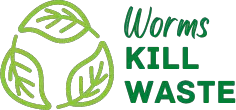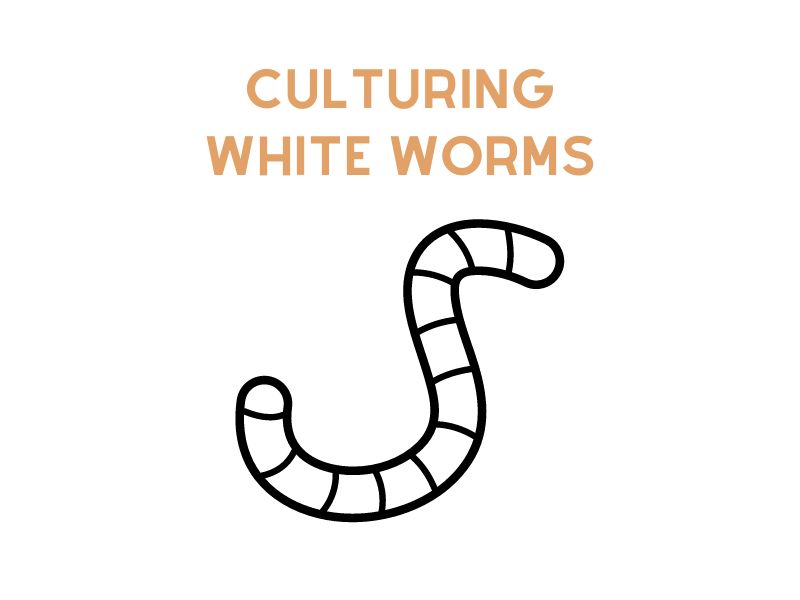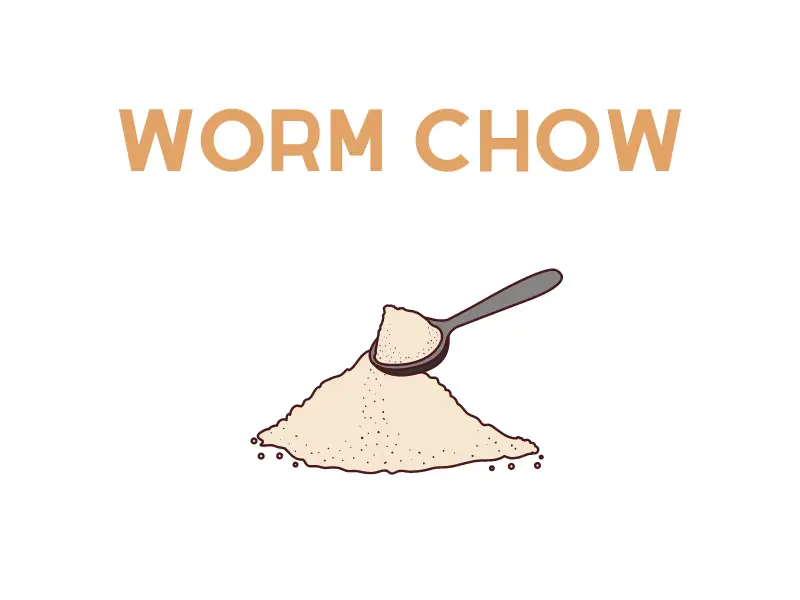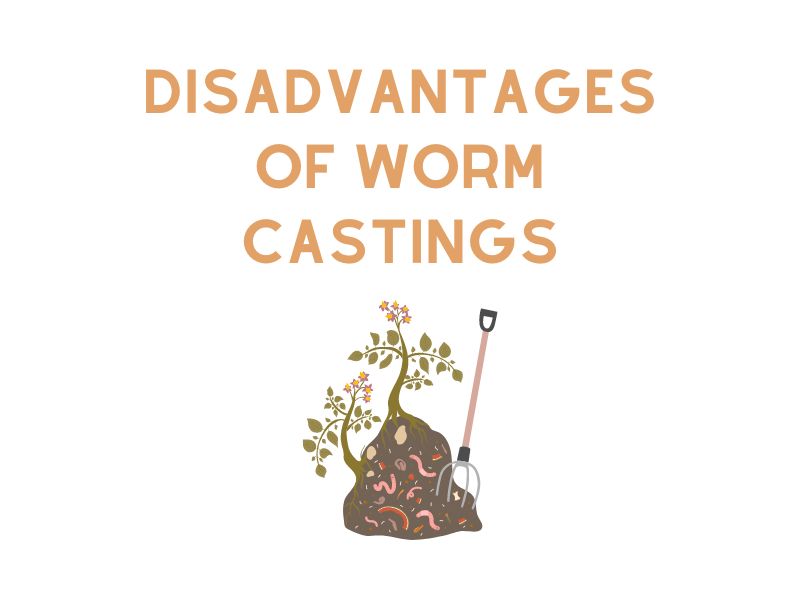Enchytraeus (Enchytraeus albidus) are also occasionally referred to as “white worms” or bristle worms in the literature and – like earthworms – systematically belong to the phylum of annelids (Annelida). They are an excellent food for fish, reptiles, and amphibians.
Enchytraeus can grow up to 50 mm long, are relatively delicate skinned, white to yellowish in color and often more or less transparent. They usually reach an age of 2 – 9 months, sometimes longer. The development from egg to sexually mature animal takes about 5 – 7 weeks.
Diving into the world of aquaculture reveals a plethora of techniques and best practices that aquarists and breeders employ to maintain the health of their aquatic inhabitants. One such practice is the cultivation of white worms, a valuable food source for many aquatic species, notably live fish and newts. This guide aims to demystify the process and offer insights into creating a thriving culture of these tiny, nutrient-rich worms.
To keep white worms healthy, a combination of whole wheat bread, cat food, and plain yogurt are often employed. These nutrients create a hotspot where white worms will gather, especially when the food was placed right on the surface of the culture. Soon after, a curious phenomenon occurs: clumps of worms begin to form, presenting themselves as a dense, wriggling mass.
An essential aspect of their cultivation is the substrate. Typically, a blend of potting soil, coir (coconut fiber), and worm bedding is used. This mixture ensures the worms have enough space to navigate and enough food to thrive. It’s interesting to note that while white worms are great for thriving in these substrates, there’s a variant known as grindal worms that can be grown in white worms without the soil.
Temperature plays a crucial role in the life cycle and reproduction of white worms. The optimum temperature for white worms lies between 55 – 68°f. However, the production will slow down past 69°f, and the population will decrease with temperatures nearing 86°c. To control the culture temperature, devices like wine chillers and refrigerators can be employed. In fact, wine coolers specifically, due to their controlled cooling ability, are often chosen by fish breeders to maintain the desired temperature.
The fascinating biology of these worms is that they possess both male and female reproductive organs, which means they can reproduce quite prolifically. As the worms reproduce, the surface of the culture becomes crowded, making it easier for breeders to let the worms gather and climb on the surrounding flat surfaces. This method is highly efficient since it makes it possible to collect a substantial number in one go.
One can easily notice if the culture is thriving by observing the culture’s surface. If untouched or uneaten food persists, it indicates the worm population isn’t substantial enough. To maintain moisture – a critical aspect since moisture is critical for their survival – adding a cup of water occasionally or ensuring the container as well has a tight-fitting lid with drill small holes is advised.
In terms of harvesting, a thin piece of glass or plastic, gently placed on the surface, will become a magnet for these creatures. They will gather in the area and climb onto this flat surface. Once you have a dense clump, these can be easily collected, providing a never-ending supply for your aquatic inhabitants.
Great Species Richness
The white, yellow or transparent worms, which look like spaghetti at first glance, are found all over the world with over 650 species (except in Antarctica). In Central Europe between 200 and 300 species can be found. The long thin body can grow up to 3 cm long. The Enchyträen divide themselves again into several species. Not every species grows so long. When the enchytraeus are transparent, you can see their inside, that is their intestinal contents, because their blood is also transparent. The circulation of the blood is caused by the heart (contractile blood vessel). It pulls forward from the posterior girdle region to the dorsal upper girdle ganglion, where it pulls back again.
In adult enchytraeus, the first bristle-less segment (peristomium) is followed by up to 70 bristle segments. Each individual segment is provided with two dorsal and two ventral bristle bundles of two to six bristles. The girdle is found on bristle segments 12 and 13. Since enchytraeus are usually bisexual, i.e., hermaphrodites, it is easy to breed them. The male sexual opening is found on segment 12 and the female on segment 13. The seed pocket is located on the fifth segment.
Enchytraeus Habitat
Due to carry-over, the species are nowadays not so easy to separate from each other worldwide and the occurrence of the individual enchytraeus species is no longer restricted to individual areas or continents. In addition, the appearance of the species is usually so similar that they can only be distinguished from each other under a microscope by analyzing the sperm. The animals depend on moisture in their habitat, as this is what wets their skin. They are found in both salt water and fresh water, such as puddles, ponds, lakes and oceans, but also on the beach in moist sand.
However, most species do not live in water, but on wet land, that is, the habitat is terrestrial. Wherever the soil is moist enough and does not dry out, such as on meadows and fields or the compost heap, the worms find an ideal habitat up to 40 cm deep in the soil. The fewer earthworms there are in the soil, the more the enchytraeus worms multiply. This is especially the case with very acidic soils or heavy agricultural use.
Settlement Density
The average population density is up to 100,000 specimens per square meter of earth surface. In some cases, as many as 290,000 specimens have been counted on just one square meter of moorland in England. However, such a mass and density in a very confined habitat only occurs with certain species. A much greater diversity of species, but with a lower density of occurrence, occurs in slightly acidic and also calcareous soils. Under good conditions in the habitat, enchytraeus live from 100 days to over a year.
Enchytraeus in Nature
In nature, they colonize the litter layer and the upper, humus-rich mineral soil. Their occurrence and distribution in the soil depend on the degree of soil moisture, the pH value, the food supply, and the respective competitive situation.
They feed on bacteria, fungi, dead organic matter, and enriched mineral soil. Enchytraeus cannot dig tunnels and are therefore dependent on loose soil.
Food Intake
The food intake of enchytraeus is saprophytic. Rotten plant remains are ingested together with the microflora (bacteria, protozoa, fungi) via the mouth pores. The protruding mouth is pressed onto food particles, which remain on it and are then drawn in. The end product is musty humus.
The Reproduction of the Enchytraeus
In order for us to breed enchytraeus properly, we must first understand how they reproduce. Enchytraeus are also called girdle worms, but this girdle, which is intended for reproduction, is only formed in fully developed, i.e. sexually mature worms. At this girdle is the penis bulb and the maturation of the eggs. Glandular cells on the girdle form the cocoon, i.e. the egg and the required cocoon fluid. In order for the girdle worm to reproduce, it places its body parts on top of each other, thus the fifth and twelfth segments lie on top of each other.
At this, the pressure of the coelomic fluid changes and the penis bulb is bulged out. As we learned earlier, most species are hermaphrodites, yet enchytraeus use a different sexual partner to reproduce. In this process, the bulb of the penis that is bulged out is placed in the opening of the partner’s spermatheca. The sperm is stored and fertilization occurs outside the body. After the reproductive act is over, the penile bulb is retracted by muscles. Enchytraeus are arranged bilaterally, meaning all reproductive organs are present in pairs in the same section.
The Oviposition
In the next step the oviposition begins, for which you have to wait a few days. The girdle forms the cocoon sheath and brings in at least one, but usually several yolk-rich eggs. The girdle is now much thicker than in the normal state. Once the cocoon has been prepared and is ready for fertilization, the girdle worm crawls backward through the cocoon, which is constructed in a circular pattern, until the worm’s spermathecal opening is level with the cocoon. Only now can the sperm enter the cocoon. After this act, the girdle worm leaves the cocoon and it closes. This gives it the shape of a lemon. To prevent the fertilized cocoon from drying out, it is still covered with soil particles. Particularly fertile specimens release up to one cocoon per day.
The temperature must be as constant as possible at 21° C. Then the young enchytraeus larvae hatch after about nine days. Already eight days later the young girdle worms are sexually mature. After hatching, the small enchytraeus have only 17 to 21 segments. Until they are sexually mature, they grow. In other Enchytraeus species, such as Enchytraeus fragmentosus, reproduction takes place by division. Not only in breeding this species can be artificially reproduced by dividing, but also in nature this species disintegrates into several parts. After a few days new enchytraeus are formed again.
Enchytraeus breeding
Keeping and breeding enchytraeus is relatively simple. It requires only regular control and a few simple foods. Breeding is done in containers (plastic containers, wooden boxes or similar) with a well-sealing but perforated lid, protected against vermin with fly screen.
These are filled to about 3/4 of the height with forest soil or a similar loose and artificial fertilizer-free soil (e.g.: special enchytraeus breeding soil or pure coconut fiber). Soil containing clay is not suitable. In the center of the container, leave depression for the food mash and put a cover disk over it. Feeding is done every 3-4 days.
It takes about 6 weeks for the first enchytraeus to become sexually mature and reproduce, but then it happens very quickly.
A good feed consists of vegetables and oatmeal. A mixture of cauliflower, carrots and potatoes, boiled until soft and mashed into a pulp, has worked very well. Add some salt (3 teaspoons per kilo of mixture) and oatmeal to make the mixture firmer. If needed, mineral supplements or fish food flakes can be mixed in to increase the nutritional value of the worms.
A notable advantage of enchytraeus is that they can be “inoculated” with active ingredients such as medications, vitamins, etc. through their diet, and these are then passed on to the fish through feeding.
Did you like this tip? In our newsletter, we bring you seasonal compost tips related to worm bins, bokashi buckets, and other composters. Sign up now to receive the eBook “Better Composting” for free.c
Frequently Asked Questions (FAQ)
What are the benefits of using worms in tropical fish culture?
Using many worms in tropical fish culture has several benefits. Firstly, worms help control pest populations that can harm the fish. Secondly, they provide a consistent and abundant supply of worms for the fish to eat, ensuring healthy feeding habits and growth. Lastly, worms are a culture is ideal food source as they are rich in nutrients essential for fish.
How do I make sure that worms thrive in my fish culture?
To ensure that worms will come and thrive in your fish culture, it is important to create favorable conditions. This includes maintaining suitable water parameters, such as temperature, pH, and oxygen levels. Additionally, providing appropriate hiding places and feeding the worms regularly will help them flourish in the culture.
Can I use worms to breed adult fish?
Yes, using worms in fish culture is an effective way to fish to breed. The presence of worms stimulates the fish’s natural behavior and encourages breeding activities. Additionally, worms provide a nutritious food source for adult fish, which enhances their overall health and reproductive capabilities.
How do I ensure that the worm culture does not dry out?
To prevent the culture is not drying out, you can follow a few steps. Firstly, keep the worm culture in a dark and moisture-retaining environment. You can use a container with a lid or cover it with a damp cloth. Secondly, regularly mist the culture with water to maintain adequate humidity levels. Lastly, avoid direct sunlight or exposure to dry air, as these factors can dehydrate the worms.
Can I use white worms to control the culture?
Yes, using white worms is a common strategy used to control the culture. However, it is essential to monitor their population and prevent overcrowding, as they can compete with the primary worms for resources. Regular thinning and harvesting of white worms can help maintain a balanced and healthy fish culture.
How do I set up a worm feeder in my fish culture?
Setting up a worm feeder is a simple process. You can use a small container or tray and place it inside the fish tank or culture system. Add a layer of substrate, such as damp soil or peat, to create a suitable environment for the worms.
Conclusion
In the realm of aquaculture and amphibian care, the need for nutrient-rich live food is paramount. White worms, not only serve as a high-protein diet for various aquatic species, but their culture can also be an engaging endeavor for hobbyists and professionals alike. Culturing these minuscule organisms is akin to sowing seeds in a garden; with patience and proper care, you can reap a bountiful harvest.
Starting a new culture requires meticulous preparation. The culture medium, often a combination of organic materials, acts as the ‘soil’ wherein these worms thrive. One of the most popular mediums to culture white worms is peat moss, an organic bedding that retains moisture and supports worm growth. This bedding is then placed in a pot or container, which will house the worm population.
Maintaining the right conditions is crucial. For white worms, a cool, dark environment, like the inside of a refrigerator, is ideal. The consistent temperature slows down their metabolism and helps in prolonging their life cycle.
Aquarium enthusiasts find white worms especially beneficial. A well-maintained culture can serve as a continuous source of live food for fish and other aquatic pets. Similarly, frog keepers appreciate the worms as a dietary supplement for their amphibious friends.
However, one cannot stress enough the importance of cleanliness in this process. It’s vital to sterilize equipment and workspaces to avoid introducing harmful pathogens into the culture. The slightest contamination can jeopardize the entire colony, leading to a lost harvest and wasted effort.
In conclusion, culturing white worms is both an art and a science. By understanding the nuances of their habitat and dietary needs, hobbyists can effectively integrate them into the feeding routines of their aquarium inhabitants, ensuring a healthy and balanced diet for their beloved aquatic pets. Whether you’re a novice aquarist or a seasoned frog keeper, this guide will aid you in cultivating a thriving white worm culture, bridging the gap between nature’s offerings and the demands of domesticated aquatic life.




